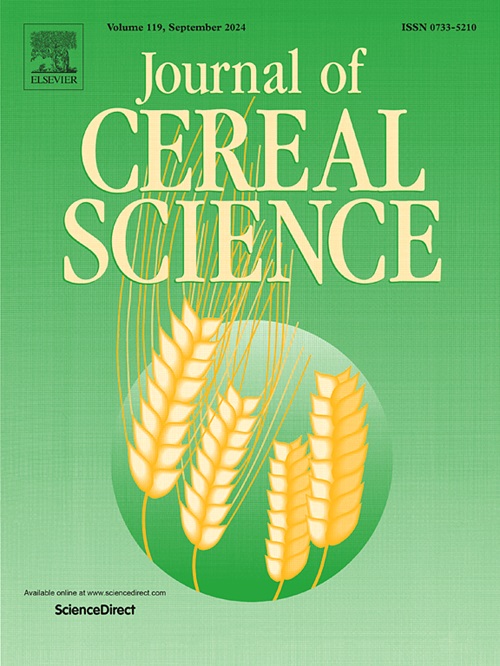Valorization of pulsed electric field-treated rice bran in cookie baking: Effects on stabilization and application
IF 3.7
2区 农林科学
Q2 FOOD SCIENCE & TECHNOLOGY
引用次数: 0
Abstract
The study examines the effectiveness of pulsed electric field (PEF) intensity on the stabilization of rice bran (RB) and its comparison with microwave (MW) and hot air oven stabilization methods. PEF treatments at a high electric field intensity of 20 kV/cm significantly stabilized RB, leading to a decrease in free fatty acid value. PEF-treated RB also showed reduced lipase activity while enhancing γ-oryzanol content under high PEF intensity. PEF-treated RB had a higher protein content (12.44 %), underscoring its effectiveness in preserving non-protein nitrogen components. The hot air oven treatment produced the highest mean particle size (84.55 μm). The refractive index of rice bran oil (RBO) ranged from 1.47 to 1.47 at 25 °C. The fatty acid profile showed that PEF treatment had the highest saturated fatty acid content and reduced monounsaturated fatty acids. PEF-treated RB cookies had a lower hardness (1493.11 g) than the control sample (2942.49 g). Cookies incorporated with up to 15 % PEF-treated RB maintained a favourable sensory profile, presenting a promising approach to enhancing the nutritional content of cookies without compromising taste and texture. The findings provide valuable insights into the effective valorization of PEF-treated RB in cookies.

脉冲电场处理米糠在饼干烘烤中的增值:对稳定和应用的影响
研究了脉冲电场(PEF)强度对米糠(RB)稳定的影响,并与微波(MW)和热风炉稳定方法进行了比较。电场强度为20 kV/cm的PEF处理显著稳定了RB,导致游离脂肪酸值降低。在高PEF强度下,经PEF处理的RB的脂肪酶活性降低,γ-谷米醇含量增加。经pef处理的RB蛋白质含量较高(12.44%),说明pef处理能有效保存非蛋白氮成分。热风炉处理的平均粒径最高,为84.55 μm。25℃时米糠油的折射率为1.47 ~ 1.47。脂肪酸谱显示,PEF处理的饱和脂肪酸含量最高,单不饱和脂肪酸含量减少。经pef处理的RB饼干的硬度(1493.11 g)低于对照样品(2942.49 g)。加入高达15% pef处理的RB的饼干保持了良好的感官特征,这是一种有希望的方法,可以在不影响口感和质地的情况下提高饼干的营养成分。研究结果为饼干中pef处理的RB的有效增值提供了有价值的见解。
本文章由计算机程序翻译,如有差异,请以英文原文为准。
求助全文
约1分钟内获得全文
求助全文
来源期刊

Journal of Cereal Science
工程技术-食品科技
CiteScore
7.80
自引率
2.60%
发文量
163
审稿时长
38 days
期刊介绍:
The Journal of Cereal Science was established in 1983 to provide an International forum for the publication of original research papers of high standing covering all aspects of cereal science related to the functional and nutritional quality of cereal grains (true cereals - members of the Poaceae family and starchy pseudocereals - members of the Amaranthaceae, Chenopodiaceae and Polygonaceae families) and their products, in relation to the cereals used. The journal also publishes concise and critical review articles appraising the status and future directions of specific areas of cereal science and short communications that present news of important advances in research. The journal aims at topicality and at providing comprehensive coverage of progress in the field.
 求助内容:
求助内容: 应助结果提醒方式:
应助结果提醒方式:


